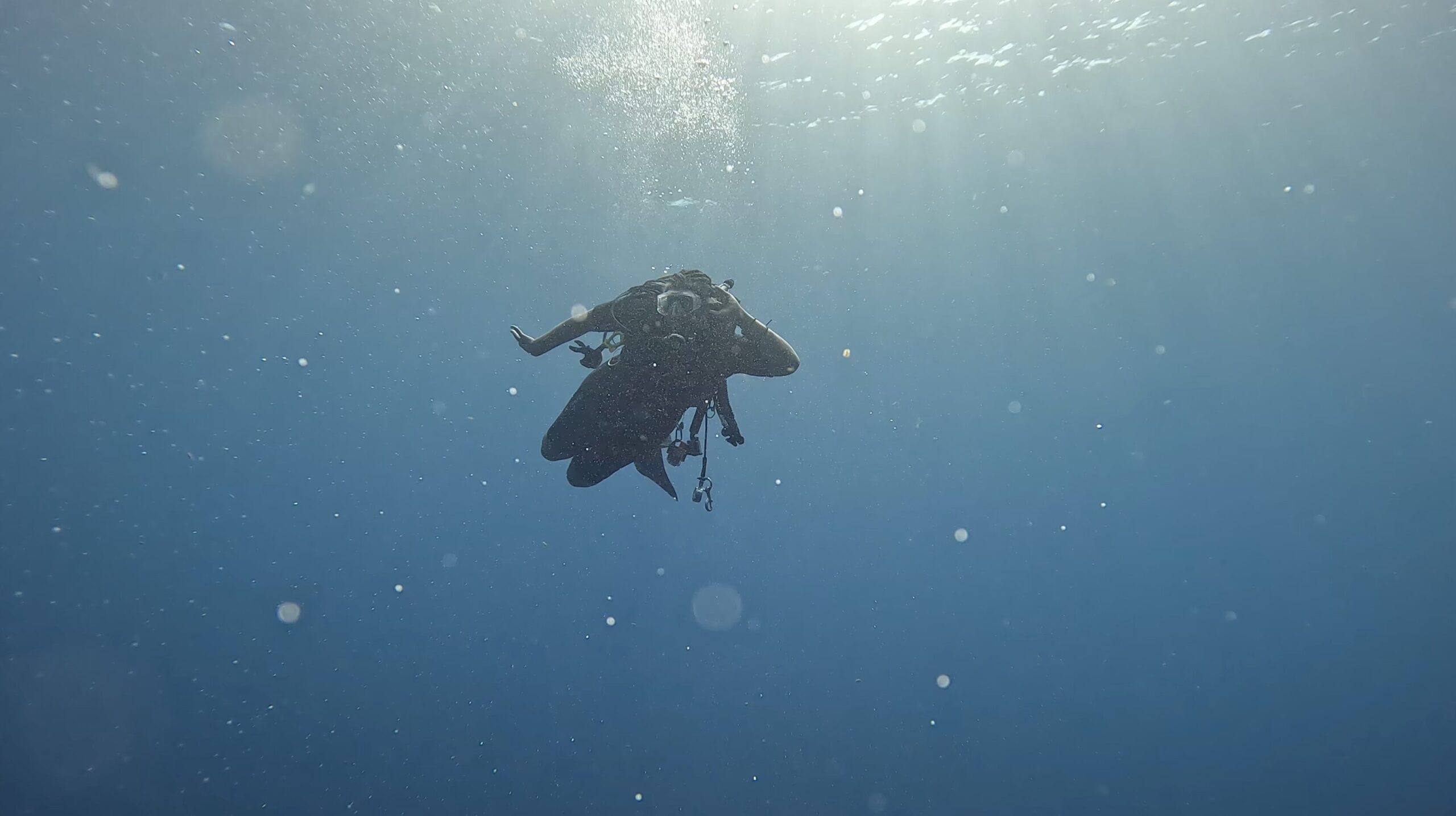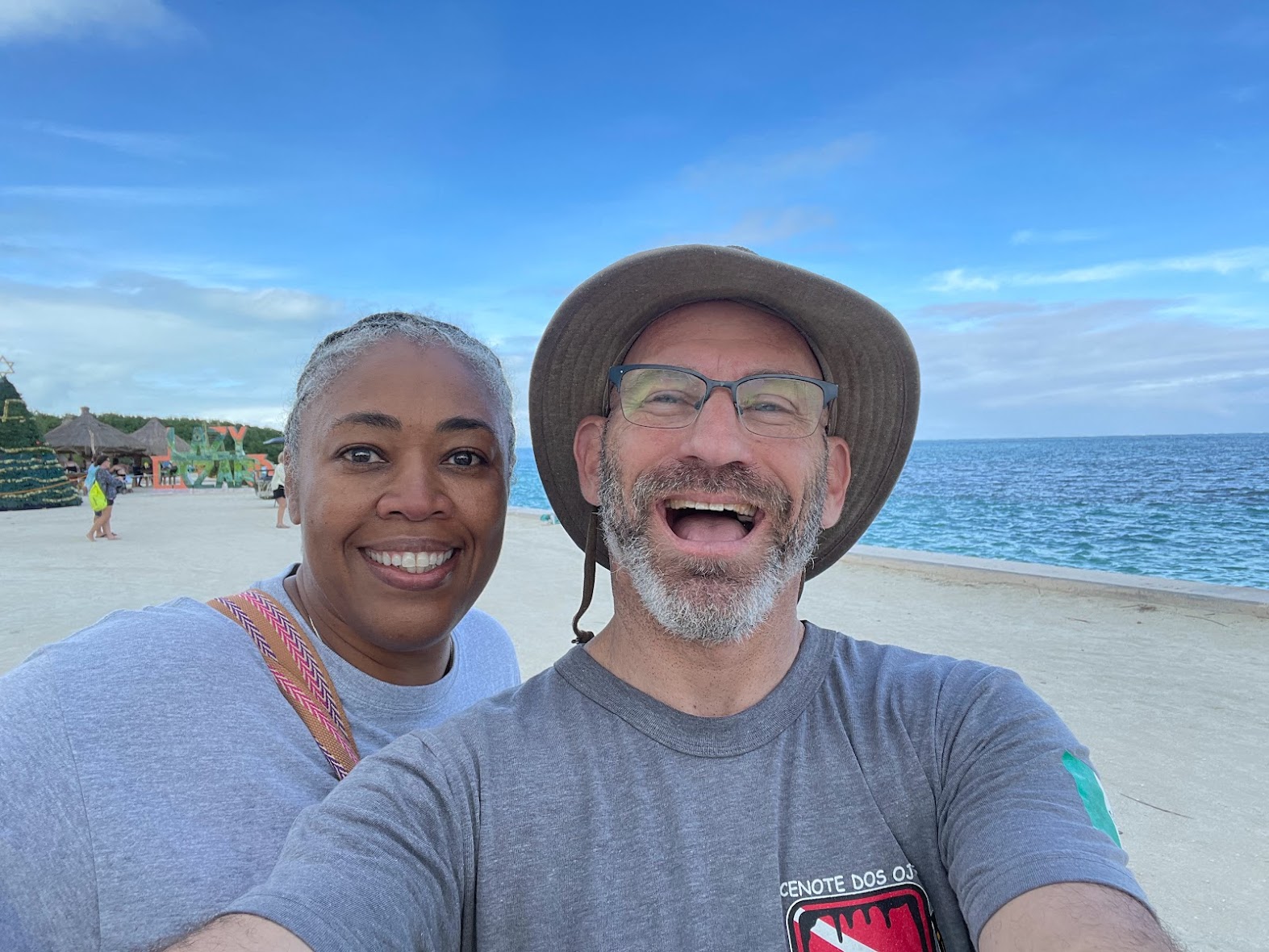Deep Trouble: A Heart Attack While Diving

May 21, 2024
Husband-and-wife divers Eric and Nicole DeHaven were on a dive nearly 2 hours off the coast of a small Belize island when Nicole had a heart attack. Now they’re convinced an inReach® satellite communication device1 and dive case should be an imperative part of all divers’ kits.
Nicole DeHaven was 30’ deep into her dive when she was struck by an odd feeling: a pinching in her chest when she inhaled.
Not thinking too much of it, she took some deep breaths and continued to dive.
The further she went, the more pressure and pinching she felt. At 40’ deep, her right arm and hand started to tingle. She couldn’t identify the feeling, but her instinct was to not go any deeper. Instead, she hovered above the group and didn’t continue. The weird feeling persisted.
Soon she decided to call off her dive and slowly ascended back to the dive master waiting at the surface. She told him something was off.
Eric and Nicole run a busy family business and are in the process of opening a coffee shop. Nicole is a former chef and Eric is an avid outdoorsman — climbing, hiking, mountaineering, camping and more.
“Me — not so much,” Nicole said. “I was always in the kitchen and working a lot.”
But when she met Eric, he suggested they go camping. Nicole wasn’t sure about that.
Over time, though, he introduced her to the outdoors, and now they enjoy adventures together. In 2016, they got dive certifications, and Nicole fell in love with the activity.

“It was one of the best things that I’ve ever done,” she said.
Eric got cave and master dive certifications, and they bought a dive boat so they could continue going locally.
Over the past three years, though, their businesses kept them so busy that Eric and Nicole couldn’t even take vacations at the same time. The dive trip to the island of Caye Caulker in Belize was their first trip together in some time.
It was day 6 of the trip, and the dive site was far from shore compared to other days — nearly a 2-hour boat ride. There were 8 people in total on the small boat, including the captain, dive masters and dive assistant. The weather that morning was beautiful, with calm waters and only a few clouds dotting the sky.
The dive company kept an efficient schedule to maximize dive time, instructing everyone to put their gear on prior to arrival at the dive site so they could get right into the water.
When Nicole felt tightness in her chest shortly thereafter, she initially thought it could’ve just been anxiety.
With that in mind, when Nicole surfaced, she told the dive master that she wanted the group to continue their dive. They had only been in the water for 10 minutes.
But once back in the boat, Nicole deteriorated quickly. She felt disoriented and dizzy, and her hand and arm went completely numb.
She wondered if she had inhaled too much oxygen. The captain wondered if she was seasick.
She laid down in the middle of the boat in a dazed state.
When Eric and the rest of the group arrived at the boat about 30 minutes later, he was immediately concerned at the sight of his wife and began a condition check.
“She is 53 years old and in good health, so this was a shock as to me it was the signs of a heart attack,” he said. “I monitored her for a few more minutes before I notified the dive master that we needed to return to shore ASAP.”
At that point he learned that the boat had no form of emergency communication or radio on board. He pulled out his inReach Mini satellite communication device, enclosed in the dive case.
“Funny enough, I was the one who bought it,” Nicole said.
She saw the Garmin inReach device around Christmastime several years ago and thought her husband needed it for all his mountain adventures. He began using the device while on trips to message her and confirm he was safe.
“It always just gave me a sense of security,” she said.
And when Eric realized there was a dive case for the inReach device, he bought that and started taking it on dives.
On one dive Nicole was pulled away by a current on a foggy day, and if they had not made it to her in time, she could’ve become lost in the fog. That solidified Eric’s decision to add the device to his dive kit — in case one of them ever became separated from the boat.
Eric pulled out his inReach device and messaged the dive shop to let them know the situation, and that they were going to need emergency services on standby upon arrival.
Meanwhile, the weather was starting to turn — a storm was rolling in. Their small boat was getting hammered by 4’ swells, crashing water up onto the boat and slowing their progress. Nicole’s condition was worsening.
Eric hit the SOS button and began messaging with the Garmin Response℠ global emergency response coordination center. He also messaged their son back at home, as well as the dive shop to request that they send a larger and faster boat to meet them.
“All along I was able to safely use my…